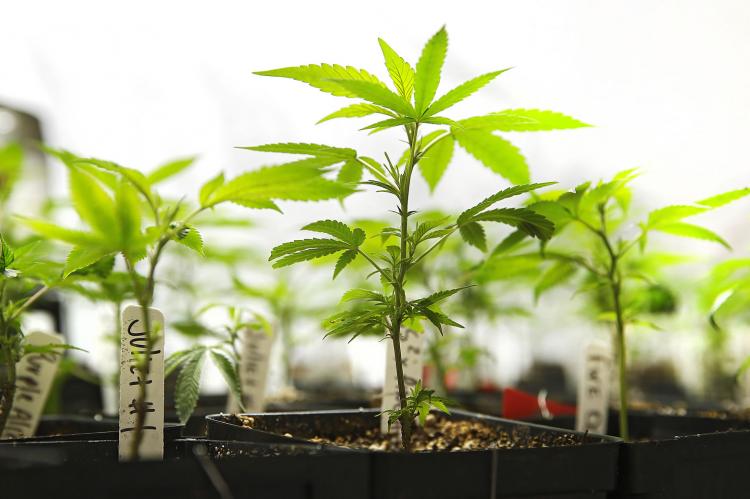The Art of Cloning Cannabis Plants
When quality deserves repeating.
Today, cannabis growers have the potential to copy their favorite plants and grow them the same way as the original. The process, known as “cloning,” involves various techniques to replicate a similar marijuana plant with the same characteristics. For forward-thinking producers with a strong brand — or a highly successful cultivar they wish to sell on the same level of quality — cloning can be an effective, easy-to-implement solution if done well. So how and why is cloning done? What are the benefits? Are there any drawbacks? What should every grower know about cloning?
WHY CLONING IS COMMONPLACE IN CANNABIS
Cloning is a perfect way to produce the same type of plants without compromising on potency while keeping the same desired attributes. Plentiful harvest can be achieved through cloning as the clone shares the same genetic code of the mother plant.
First, growers must choose the right plant, i.e., a mature plant with specific criteria (smell, level of TCH, and so forth). The female plant is capable of producing up to 50 clones a week — making it a highly desirable harvest for cannabis producers.
The cloning process is referred to as being “asexual” as the cloned plant is grown from rooted cuttings from the mother plant. To clone the cannabis plant, growers should choose a mother plant that’s less than two months old for the greatest chances of success.
WHAT ARE THE ADVANTAGES OF CLONING?
For busy producers in quest of quality harvest and high yields with little effort, cloning their best performing cultivars present them with a myriad of benefits:
Speed: each clone has the same age as their parents, meaning they grow much quicker in comparison to their seeded counterparts. On top of it, cloned plants can grow faster for the first weeks.
Quality: Cannabis producers should respect the dosage of 10% less nitrogen before cutting the plants during the first weeks to permit sustainable growth. Producers can cut the desired leaves from the mother and grow them to get the clones with the same quality.
Inexpensive: cloning cannabis is a super cost-effective method compared to traditional ways of growing and harvesting cannabis. The process is fast and cheap — meaning producers can focus on growing their desired plants from the mother source and replicate them with clones.
CANNABIS CLONING METHODS
There are different cloning methods — or rooting mediums — for marijuana producers to achieve outstanding, high-quality clones. Every producer, no matter the manner they choose, must work in a sterile environment with a list of tools as described here.
The water method is the easiest of all and doesn’t require any rooting medium. Growers must cut the stalks of the plants and leave them in water with some plant food. While keeping sunlight indirect and preventing algae from occurring, cannabis growers can achieve desired clones.
The soil method involves putting the stalks of the plants into the soil — while ensuring the soil is not overwhelmed with nutrients. Some water should be added to the process. Most transplant clones can be transferred into the soil after 14 days on average.
The Rockwool method, also known as the non-soil equivalent, involves using rockwool cubes (or stone-wool cubes), which are used to germinate seeds. The cubes enable high water and air retention and should be placed away from the light.
FINAL NOTES ON CLONING CANNABIS PLANTS
Cloning for sex: producers clone only females, but there’s one more step to the process. Growers should keep away the plant from the light after 12 hours to start the flowering process and leave the plant in total darkness for up to 2 weeks. Then, they need to isolate males and females after the flowering stage and transplant only the female plants.
Viral infections following cloning: the mother plant can produce thousands of clones, yet generational clones may be prone to viral infections from time to time. This is due that the cloned seeds need to adapt to a new environment, despite being capable of fighting infections.
The likelihood of infections increases over time, so to prevent this from happening, cannabis growers should sample the original harvest to test the quality of the clones before doing any “mass production.”
Cloning is an effective way for marijuana producers to sample and replicate their top-performing cultivars for larger production. It’s an easy process with three types of methods and a quite cost-effective, therefore, could represent an excellent opportunity for producers to quickly grow and market their best products.
- Log in to post comments

